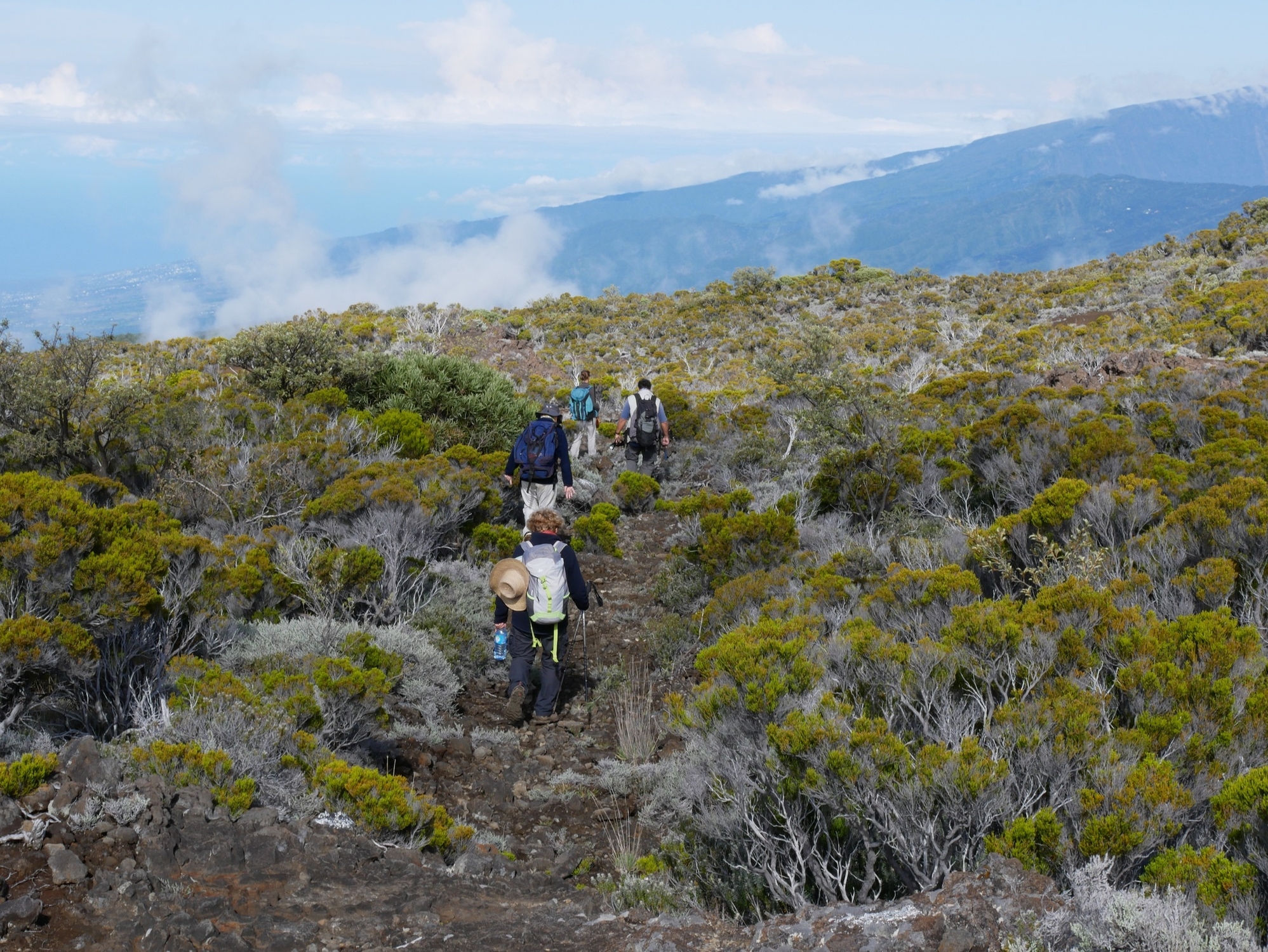
- Home
- Archaeology on Reunion Island
- Sites
- Saint-Joseph
- Caverne de Cotte
The Caverne de Cotte or Cotte cave: a marron refuge occupied at the heart of the Massif du Piton de la Fournaise in the mid-18th century and a bird- and kid-hunting resting point.
Historiography of the Cotte cave
From 1725, to bring an end to a series of robberies and attacks by marrons on colonial habitations in Les Bas, the Conseil supérieur de Bourbon authorised and organised a man hunt in the mountains. At an altitude of over 2,200 metres, the Cotte cave is described in archival documents as one of several marron refuges. In June 1758, the "fusilleurs" of Les Bas seem to have launched an attack in which several slaves died, one of whom was called Cotte. This story was handed down over the years, including by the slave hunters and their descendants, and was even mentioned in accounts left by visitors to the volcano in the early 20th century.
Archaeological discoveries
Test pits opened inside the cave suggest two distinct types of occupation. The most recent levels revealed domestic artefacts dating from the 19e century, including crockery and a medicinal phial, alongside lead projectiles and bird bones, suggesting it was occupied by hunters for brief periods during the hunting season or by scientists and tourists visiting the volcano. The lower levels, where there were fewer finds – chert and the bones of birds and kids – were associated, in contrast, with alterations made to the space, including the construction of a low dry-stone wall and the levelling of the floor, suggesting people had occupied the site for longer periods, also for the purpose of hunting. These lower levels are thought to date to a marron occupation, although there is insufficient evidence to confirm this hypothesis.
Associated media
Open Media Library

View of the shelter (Saint-Joseph, Caverne de Cotte, 2017)

Low wall (Saint-Joseph, Caverne de Cotte, 2017)

Gunflint (Saint-Joseph, Caverne de Cotte)

Lead projectiles (Saint-Joseph, Caverne de Cotte)

Chinese porcelain (Saint-Joseph, Caverne de Cotte)

